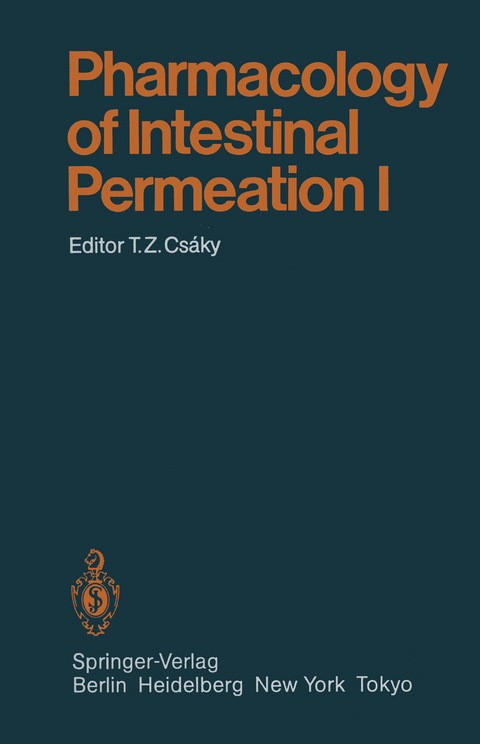
Pharmacology of Intestinal Permeation I
Springer Berlin (Verlag)
978-3-642-69507-0 (ISBN)
1 Morphology of the Intestinal Mucosa..- 2 Intestinal Permeation and Permeability: an Overview..- 3 Permeability and Related Phenomena: Basic Concepts.- 4 Methods for Investigation of Intestinal Permeability.- 5 Vascular Perfusion of Rat Small Intestine for Permeation and Metabolism Studies.- 6 The Use of Isolated Membrane Vesicles in the Study of Intestinal Permeation.- 7 The Transport Carrier Principle.- 8 Energetics of Intestinal Absorption.- 9 Polarity of Intestinal Epithelial Cells: Permeability of the Brush Border and Basolateral Membranes.- 10 Electrical Phenomena and Ion Transport in the Small Intestine.- 11 Intestinal Permeation of Water.- 12 Intestinal Permeability to Calcium and Phosphate.- 13 Protein-Mediated Epithelial Iron Transfer.- 14 Intestinal Absorption of Heavy Metals.- 15 Intestinal Permeability of Water-Soluble Nonelectrolytes: Sugars, Amino Acids, Peptides.- 16 Pharmacologic Aspects of Intestinal Permeability to Lipids (Except Steroids and Fat-Soluble Vitamins).- 17 Intestinal Absorption of the Fat-Soluble Vitamins: Physiology and Pharmacology.
| Erscheint lt. Verlag | 4.6.2012 |
|---|---|
| Reihe/Serie | Handbook of Experimental Pharmacology |
| Co-Autor | W. McD. Armstrong |
| Zusatzinfo | XX, 708 p. |
| Verlagsort | Berlin |
| Sprache | englisch |
| Maße | 170 x 242 mm |
| Gewicht | 1235 g |
| Themenwelt | Medizin / Pharmazie ► Medizinische Fachgebiete ► Pharmakologie / Pharmakotherapie |
| Medizin / Pharmazie ► Pharmazie | |
| Schlagworte | hepatology • Kinetics • Permeation • Pharmacokinetics • pharmacology • Research |
| ISBN-10 | 3-642-69507-8 / 3642695078 |
| ISBN-13 | 978-3-642-69507-0 / 9783642695070 |
| Zustand | Neuware |
| Informationen gemäß Produktsicherheitsverordnung (GPSR) | |
| Haben Sie eine Frage zum Produkt? |
aus dem Bereich


